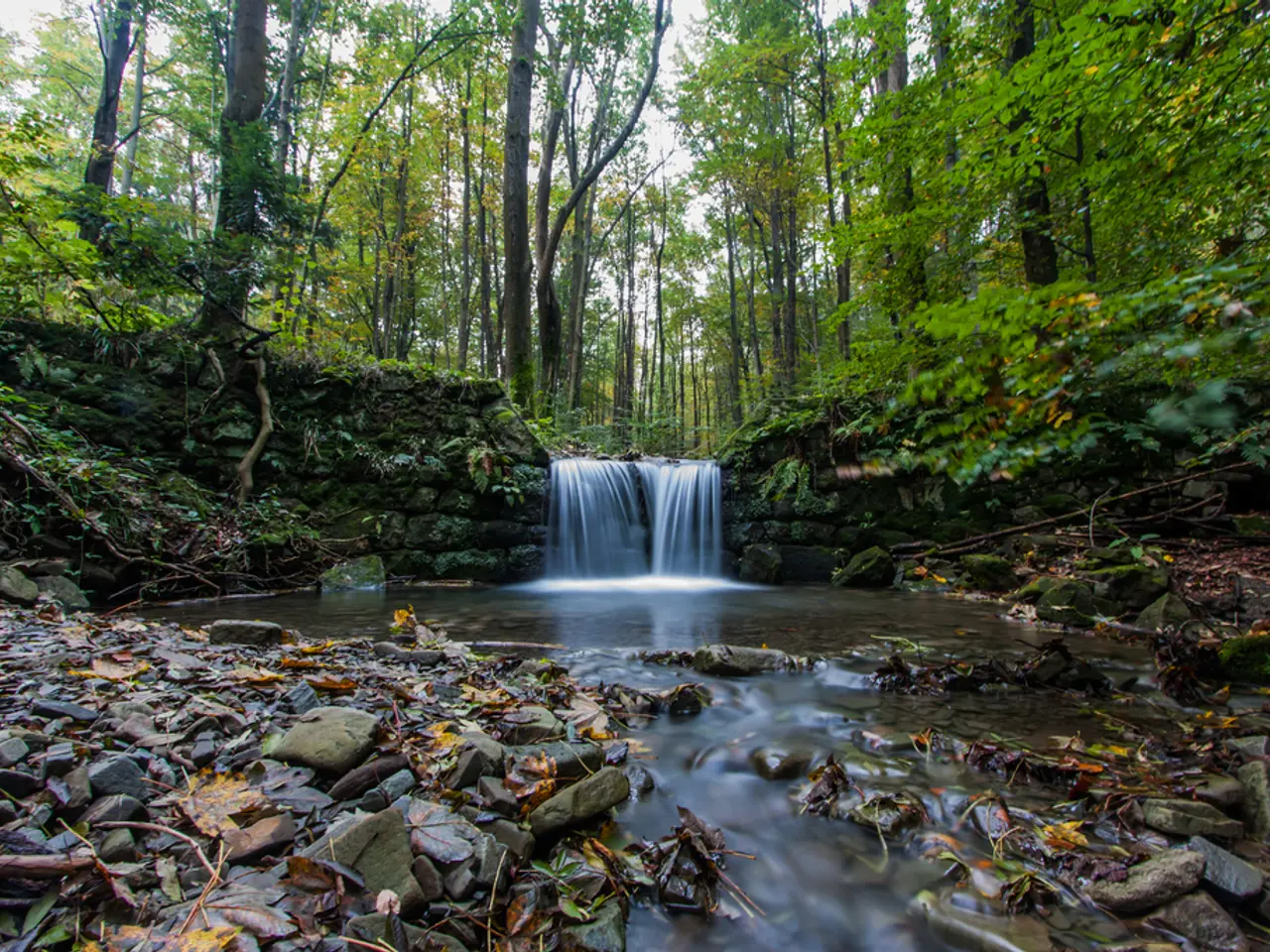Guide for Building a Percolation Well
In the pursuit of finding a reliable water source, dug seep wells can be a valuable option. Here's a step-by-step guide on how to construct and ensure the safety of a dug seep well.
Digging the Seep Well
The first step in digging a seep well is finding an appropriate location, such as low-lying areas, the top of a hill or mountain, muddy areas, or plant life that grows near water. Once the location is chosen, dig a hole about 12-18 inches across and as deep as necessary to reach the water table. For sandy soil, dig the hole 8-10 feet away from the water source, while for clay soil, dig it 3-5 feet away.
Preparing the Seep Well
Line the seep well with stones to help keep sediment out or to prevent the hole from collapsing, but this is not required. It's also important to check for animal tracks, urine, and feces around the seep well to gauge the local wildlife and potentially find a food source.
Cleaning and Filtering the Water
Allow the hole to fill about half way with water, then scoop out the muddy water to remove excessive sediment. Repeat this process until the water is clear enough for drinking. Skim any organic material off the top of the water and discard it. If the water still has too much sediment in it, strain it through a piece of cloth to filter out large particles.
Evaluating the Safety of a Dug Seep Well
To determine the safety of a dug seep well, evaluation must consider multiple variables including soil composition, proximity to surface water, and potential contamination sources such as rainwater, minerals, wildlife, and location.
Key factors and methods include:
- Soil Composition and Permeability: Sandy or porous soils allow faster movement of pollutants to the seep well, increasing contamination risk, whereas clay soils might provide more filtration but also cause poor drainage.
- Proximity to Water Sources: Wells located close to streams, rivers, or riparian zones face a higher risk of contamination via hydrological changes, sediment runoff, or direct impacts from adjacent activities.
- Potential Contamination from Rainwater and Minerals: Rainwater runoff can carry pollutants or pathogens into the well, especially if the well is uncovered or improperly sealed. Mineral contamination typically comes from groundwater interacting with bedrock.
- Wildlife and Location Factors: Animals can introduce bacteria such as E. coli or coliforms into the well if it’s not properly protected. Well location should be away from livestock, septic systems, or areas prone to wildlife fecal contamination.
- Well Construction and Maintenance: Proper capping, casing, and sealing prevent intrusion of surface contaminants. Routine inspection for cracks, casing corrosion, or gaps helps maintain integrity.
- Testing and Risk Assessment: Water testing for bacteria (Total Coliform, E. coli), inorganic chemicals (metals, minerals), and radioactivity is essential to assess water quality. Ecological and human health risk assessments analyze potential contaminants' severity, likelihood, and detection.
Summary of steps to determine seep well safety:
- Assess soil type and permeability around the well to understand contamination pathways.
- Evaluate proximity to surface water bodies, septic systems, and sources of pollutants, avoiding direct hydrological impacts.
- Monitor potential contaminant inputs: rainwater runoff quality, mineral content in groundwater, signs of wildlife intrusion.
- Regularly inspect and maintain well infrastructure to ensure proper sealing and prevent surface contamination.
- Perform comprehensive water quality testing for bacteria, metals, and radioactive elements at least annually or as recommended.
- Use a systematic risk assessment approach to prioritize monitoring and mitigation efforts based on severity, occurrence likelihood, and detectability of contamination events.
While procuring water in this manner is not guaranteed to be free of contaminants, bacteria, or toxins, it is recommended to boil the water or run it through a more proven water filter.
Incorporating dug seep wells into a survival lifestyle could provide a reliable water source when living outdoors or in home-and-garden settings. To ensure safety, it's essential to consider various factors during and after water well construction, such as soil composition, proximity to water sources, potential contaminants, and well maintenance, as outlined in the safety evaluation steps.




